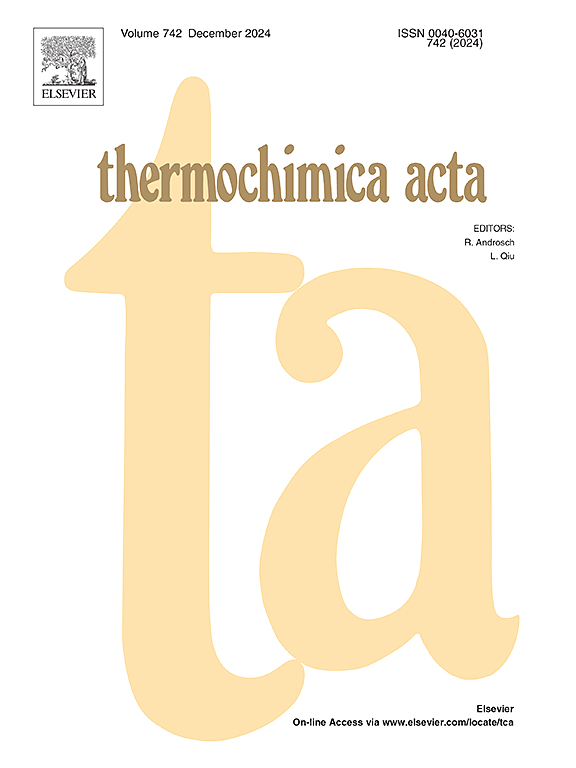Effect of powder characteristics on thermal oxidation of boron
IF 3.1
2区 化学
Q2 CHEMISTRY, ANALYTICAL
引用次数: 0
Abstract
Boron has been widely studied as an attractive fuel for air-breathing propulsion due to its high oxidation enthalpy. However, the metrics from many relevant published ignition and combustion experiments with different boron powders cannot be compared with one another because of variations in experimental methods and conditions. Conversely, thermoanalytical measurements performed with different powders used consistent procedures and thus are suitable for direct comparisons. Here, the effects of characteristics of boron powders on their oxidation are elucidated based on the available reports. The oxidation metrics included temperatures for oxidation onset and peaks of differential scanning calorimetry (DSC) and differential thermogravimetry (DTG) traces, mass gain at a certain temperature and an integrated oxidation heat release. The oxidation metrics were correlated with data on particle size, purity, and crystallinity. The experimental heating rates, gas flowrates, and oxygen partial pressures were also considered. All characteristic temperatures recovered from the thermal analysis exhibit a minimum for 0.5 – 1.5 µm particles. The identified oxidation metrics/powder parameter trends are distinct for the amorphous and crystalline boron. Generally, both the particle size and crystallinity affect the oxidation. The effect of the boron purity remains unclear. In the future, it is recommended to specify the type of impurity, which might clarify the influence of the composition of boron-based powders on their oxidation. The observed trends are interpreted semi-quantitatively assuming each boron particle is an aggregate with a reactive shell and an inert core.
求助全文
约1分钟内获得全文
求助全文
来源期刊

Thermochimica Acta
化学-分析化学
CiteScore
6.50
自引率
8.60%
发文量
210
审稿时长
40 days
期刊介绍:
Thermochimica Acta publishes original research contributions covering all aspects of thermoanalytical and calorimetric methods and their application to experimental chemistry, physics, biology and engineering. The journal aims to span the whole range from fundamental research to practical application.
The journal focuses on the research that advances physical and analytical science of thermal phenomena. Therefore, the manuscripts are expected to provide important insights into the thermal phenomena studied or to propose significant improvements of analytical or computational techniques employed in thermal studies. Manuscripts that report the results of routine thermal measurements are not suitable for publication in Thermochimica Acta.
The journal particularly welcomes papers from newly emerging areas as well as from the traditional strength areas:
- New and improved instrumentation and methods
- Thermal properties and behavior of materials
- Kinetics of thermally stimulated processes
 求助内容:
求助内容: 应助结果提醒方式:
应助结果提醒方式:


